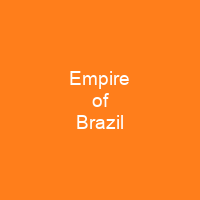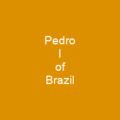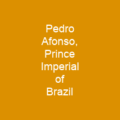The Empire of Brazil was a 19th-century state that broadly comprised the territories which form modern Brazil and Uruguay. Its government was a representative parliamentary constitutional monarchy under the rule of Emperors Dom Pedro I and his son Dom Pedro II. Brazil was victorious in three international conflicts under Pedro II’s rule, and the Empire prevailed in several other international disputes and outbreaks of domestic strife. After a 58-year reign, on 15 November 1889 the Emperor was overthrown in a sudden coup d’état led by a clique of military leaders.
About Empire of Brazil in brief

On 7 September 1822, Pedro declared the independence of Brazil and, after waging a successful war against his father’s kingdom, was acclaimed on 12 October as Pedro I, the first Emperor of Brazil. The new country was huge, sparsely populated and ethnically diverse. Unlike most of the neighboring Hispanic American republics, Brazil had political stability, vibrant economic growth, constitutionally guaranteed freedom of speech, and respect for civil rights of its subjects, albeit with legal restrictions on women and slaves, the latter regarded as property and not citizens. Slavery, which had initially been widespread, was restricted by successive legislation until its final abolition in 1888. Although heavily influenced by European styles that ranged from Neoclassicism to Romanticism, each concept was adapted to create a culture that was uniquely Brazilian. The Empire’s bicameral parliament was elected under comparatively democratic methods for the era, as were the provincial and local legislatures. This led to a long ideological conflict between Pedro I and a sizable parliamentary faction over the role of the monarch in the government. As the latter was still a minor, a weak regency was created. The power vacuum resulting from the absence of a ruling monarch as the ultimate arbiter in political disputes led to regional civil wars between local factions. In 1826, despite his role in Brazilian independence, he became the king of Portugal; he immediately abdicated the Portuguese throne in favor of his eldest daughter.
You want to know more about Empire of Brazil?
This page is based on the article Empire of Brazil published in Wikipedia (as of Dec. 03, 2020) and was automatically summarized using artificial intelligence.







